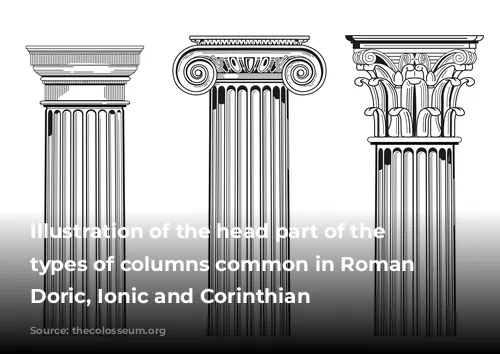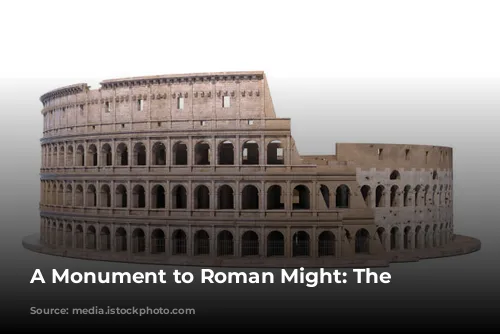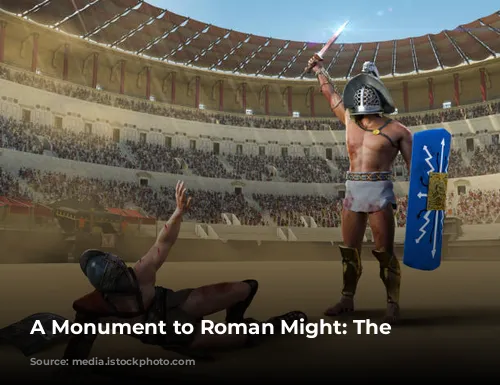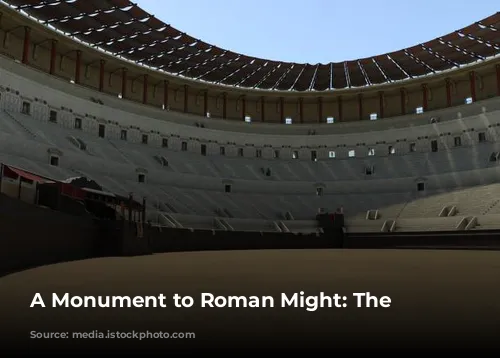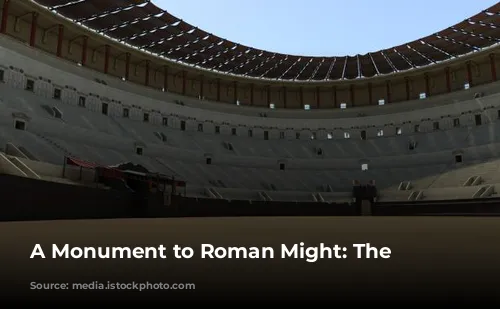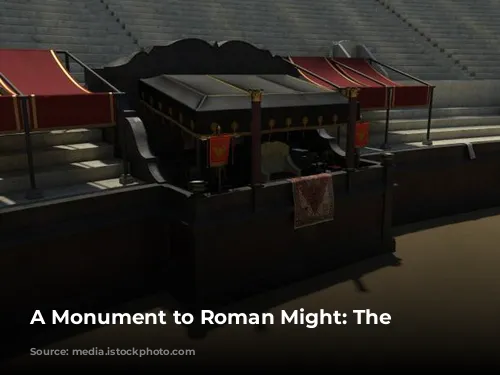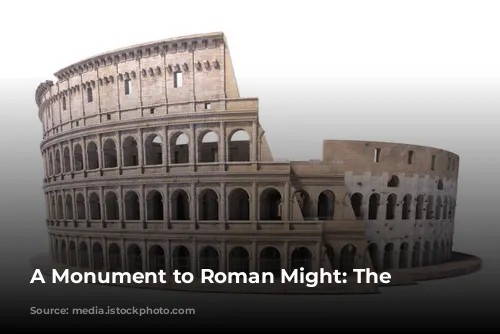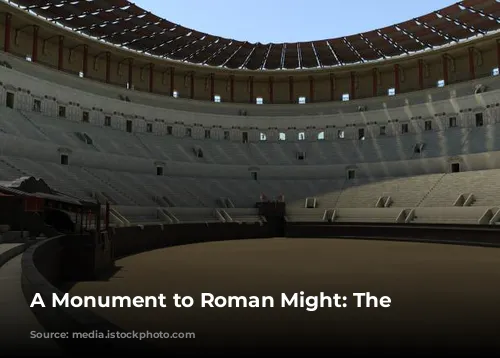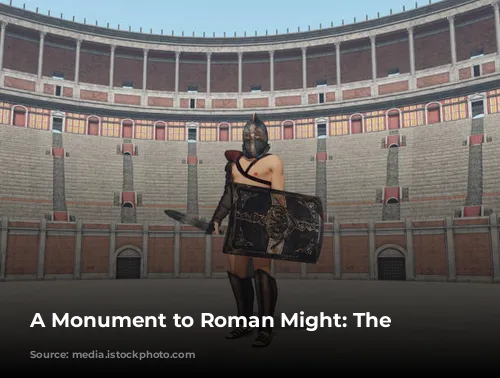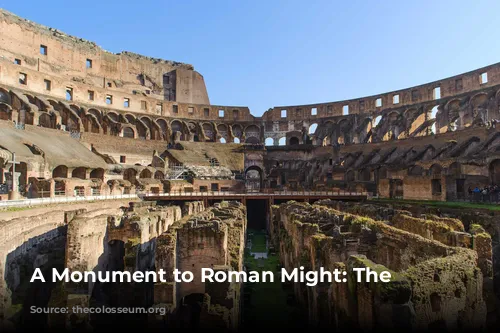The Colosseum, a towering testament to Roman architectural prowess, stands as the largest Roman amphitheater in the world. Despite enduring countless fires, earthquakes, and human neglect, this awe-inspiring structure continues to captivate visitors centuries later.
This iconic building, originally known as the Amphitheatrum Flavium, was constructed during the reign of the Flavian Emperors: Vespasian, Titus, and Domitian, between 70 AD and 80 AD.
A People’s Project: The Colosseum’s Origins
Vespasian, the emperor who commissioned the Colosseum, saw it as a symbol of unity and reconciliation. Following the tumultuous reign of Nero, the Roman populace was restless and dissatisfied with the imperial system. Vespasian aimed to regain the public’s trust through this grand gesture. Construction began in 72 AD on the site of Nero’s extravagant Domus Aurea, an opulent palace that had been criticized for its extravagance.
The Colosseum was a massive undertaking, relying heavily on the labor of Jewish slaves captured during the First Jewish-Roman War.
A Colossal Structure: Design and Construction
The Colosseum’s oval shape stretched for an impressive 189 meters along its longest axis and 156 meters across its shorter axis—nearly twice the length and one and a half times the width of a modern football field. Its construction was a feat of engineering, utilizing an estimated 100,000 cubic meters of travertine stone—a type of limestone quarried near modern-day Tivoli—along with vast quantities of Roman cement, bricks, and tuff blocks.
To bind the colossal blocks together, the Romans employed an estimated 300 tonnes of iron clamps. These clamps were salvaged in later centuries as the Colosseum fell into disrepair, leaving behind the characteristic pockmarks that still mark its walls.
A Grand Spectacle: The Colosseum’s Appearance
The Colosseum was designed to inspire awe. Standing nearly 50 meters tall—an unprecedented height for the time—and covering an area of 6 acres, it was the most complex man-made structure in the world. The white travertine stone used in its construction reflected the sun’s rays, creating a dazzling spectacle. Its impact on an ancient Roman would have been akin to gazing upon the Empire State Building today.
The Colosseum showcased all three major architectural orders of the time:
- Tuscan columns on the ground floor, a Roman variation on the austere Greek Doric style.
- Ionic columns on the second floor, featuring more intricate detailing.
- Corinthian columns on the third floor, adorned with elaborate embellishments.
This progression from bottom to top reflects a gradual increase in stylistic complexity. Each half-column served as the centerpiece of an arch, with 80 arches forming the building’s external perimeter on the first three floors. These arches were most prominent on the ground floor, measuring 4.2 meters wide and 7.05 meters tall, while the upper floors featured slightly smaller arches, 6.45 meters in height.
The fourth floor, unlike the previous three, was devoid of arches and columns. It was constructed of flat panels, which were decorated with carvings and insets of azurite and bronze, as revealed by recent cleaning efforts.
Two Gates, One Purpose: The Colosseum’s Entrances
The Colosseum had two primary entrances:
- The Porta Triumphalis on the northwest side, reserved for triumphant processions and the grand entrance of gladiators.
- The Porta Libitinaria on the southeast side, named for the Roman goddess of funerals and burial, Libitina. This gate was used to remove the bodies of those who perished in the arena.
The Arena: A Stage for Spectacle and Violence
The most striking feature of the Colosseum was its arena, a space where gladiators, prisoners, convicts, and wild animals engaged in brutal battles.
- Measuring 83 meters in length and 48 meters wide, the arena floor was constructed of wooden panels covered with sand drawn from the nearby Monte Mario hill.
- The floor was equipped with trapdoors to facilitate the introduction and removal of scenery and the creation of special effects.
- A 10-foot wall encircled the arena, leading to the first level of seating.
The arena walls, made of red and black stone blocks, provided a stark contrast to the white travertine of the building, visually reflecting the dramatic events that unfolded within.
The Cavea: A Seating Arrangement Reflecting Social Hierarchy
The cavea, the tiered seating area surrounding the arena, was divided into three levels that mirrored the social hierarchy of Roman society.
- The podium, the lowest level, was reserved for the elite, including senators and high-ranking officials.
- The gradatio, the middle level, accommodated those of lower social standing.
- The porticus, the highest level, was still occupied by Roman citizens but comprised those of lower economic status.
The seating, made from travertine stone, was relatively spacious, with each seat measuring approximately 40 centimeters wide. Wealthier attendees brought their own cushions for added comfort. The Colosseum could accommodate up to 80,000 spectators.
The cavea was also divided horizontally by access points: scalaria (stairs) leading to the stands and vomitoria (passages) leading to the exterior. Contrary to popular belief, the vomitoria were not for vomiting, but rather for quickly and efficiently dispersing the crowds— “spewing forth” spectators.
The Hypogeum: A Network of Underground Chambers
Although the arena is the Colosseum’s most distinctive feature, its most crucial element is the hypogeum, its underground network of tunnels and chambers.
- This labyrinthine space, distributed over two levels, housed gladiators and animals before their appearance in the arena above.
- It was not part of Vespasian and Titus’s original design, but was added after the Colosseum’s inauguration in 80 AD on the orders of Emperor Domitian.
- 80 vertical shafts connected the hypogeum to the arena above, allowing gladiators and animals to enter the arena through these secret passages.
- Some of these shafts included hegmata, large moving platforms used to transport larger beasts, such as elephants.
- The hypogeum was connected to the outside through a network of tunnels leading to the gladiators’ barracks and nearby stables.
- The Colosseum featured a private access tunnel for the emperor, enabling him to enter and exit the building safely and discreetly.
With the construction of the hypogeum, the possibility of flooding the arena for mock naval battles (naumachia) became impossible. Only two naumachia were held before the hypogeum’s construction.
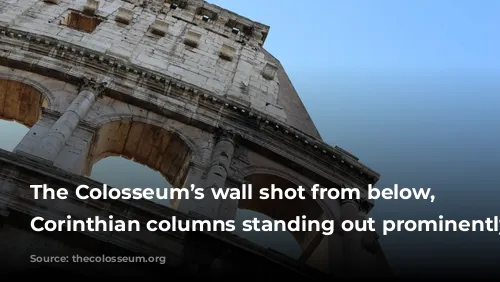
Conclusion
The Colosseum stands as a testament to the engineering genius and ambition of the Roman people. It was not only a symbol of Roman power but also a place of entertainment, spectacle, and violence. Today, it serves as a reminder of the past and a source of fascination and wonder for visitors from around the world.
